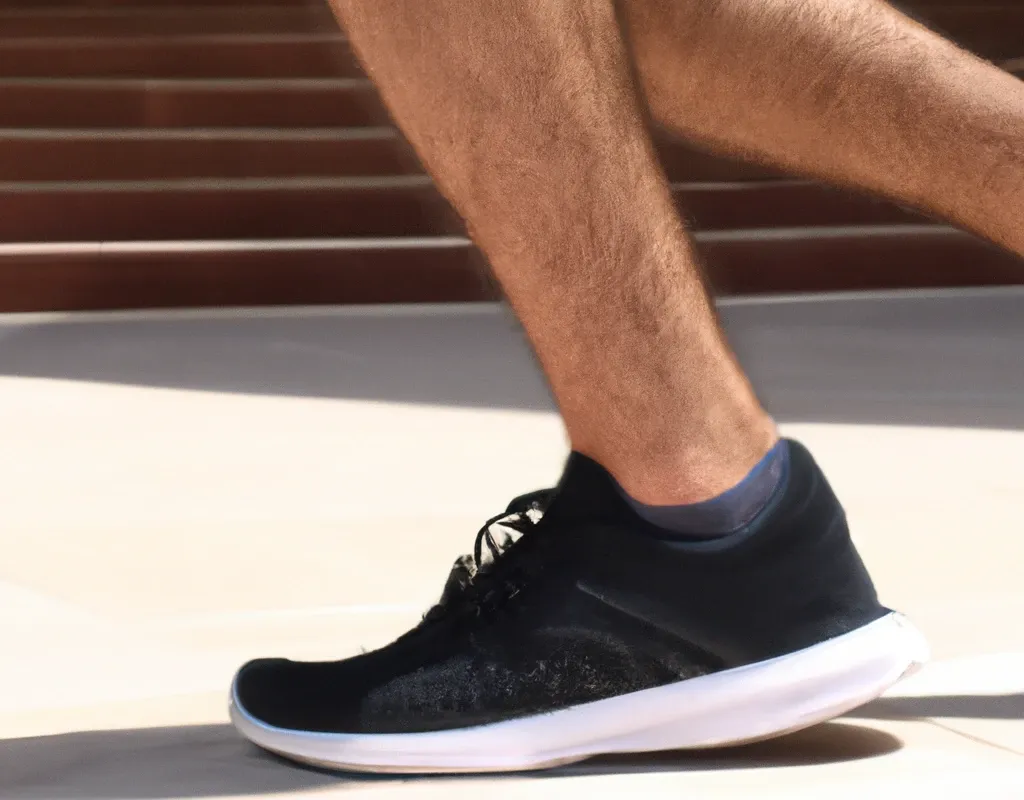The number of steps per day that is necessary for weight loss can vary depending on a person’s age, gender, weight, and other factors. However, research suggests that increasing physical activity, including walking, can effectively lose weight.
One study found that adults who took at least 7,500 steps per day had a lower body mass index (BMI) and a lower risk of obesity than those who took fewer steps. Another study found that increasing the daily step count by 1,000 steps per day was associated with a 0.5% decrease in BMI.
The Role of Physical Activity in Weight Loss
Physical activity, including walking, can play a significant role in weight loss and maintenance. When you engage in physical activity, your body uses energy (calories) to fuel the activity. Increasing your physical activity can increase the number of calories your body burns, which can help with weight loss.
In addition to burning calories, physical activity can also help to improve insulin sensitivity and reduce the risk of developing conditions such as type 2 diabetes and heart disease, which can be related to obesity.
Diet is also an important factor in weight loss because it balances the calories you take with the calories you burn. When you consume more calories than your body needs, the excess calories are stored as fat, which can lead to weight gain. On the other hand, when you consume fewer calories than your body needs, your body can use stored fat as an energy source, which can lead to weight loss.
Therefore, diet is as important as physical activity when it comes to losing weight because it can help to create a calorie deficit, which is necessary for weight loss. In addition, diet is often a more significant factor because it is easier to control calorie intake than calorie expenditure.
The Benefits of Walking for Weight Loss
Walking is a low-impact, accessible form of physical activity that can effectively lose weight. Some of the benefits of walking for weight loss include:
- Burning calories: Walking can help burn calories, contributing to weight loss. The number of calories burned while walking can vary depending on factors such as the intensity of the walk, the duration, and the person’s age, weight, and gender.
- Improving insulin sensitivity: Regular walking can help to improve insulin sensitivity, which can help to control blood sugar levels and reduce the risk of developing conditions such as type 2 diabetes.
- Reducing stress: Walking has been shown to impact mental health positively and can help reduce stress, anxiety, and depression. Reducing stress can be beneficial for weight loss because stress can lead to unhealthy behaviors such as overeating.
- Improving cardiovascular health: Regular walking can help to improve heart health by lowering the risk of high blood pressure, high cholesterol, and diabetes.
- Convenience: Walking is a convenient form of physical activity that can be done almost anywhere. This can make it easier to incorporate into a busy schedule.
Walking for Weight Loss: Tips and Tricks

Here are a few tips and tricks for using walking as a tool for weight loss:
- Set a goal: Setting a specific, achievable goal can help to motivate you to stick with your walking routine. Consider setting a goal for the number of steps you want to take per day or the number of days per week you want to walk.
- Track your progress: Using a pedometer or a fitness tracker can help you track your steps and monitor your progress. Seeing the numbers increase can be a great way to stay motivated and motivated.
- Find a walking partner: Walking with a friend or a group can make the activity more enjoyable and help to keep you motivated.
- Vary your route: Mixing up your walking route can help to keep things interesting and prevent boredom. Consider exploring new neighborhoods or parks to add variety to your walks.
- Wear comfortable shoes: Wearing shoes that fit well and provide proper support can help to prevent injuries and make your walks more comfortable.
- Walk with good posture: Good posture can help to improve your breathing and increase the efficiency of your walk. Stand up tall, keep your shoulders relaxed, and engage your core.
- Gradually increase your intensity and duration: Increasing your walks’ intensity and duration can help improve your fitness level and increase the number of calories you burn.
Remember to consult with a healthcare provider before starting a new exercise program. They can help you develop a personalized physical activity plan for you.
How to Increase Your Step Count for Weight Loss
Here are a few ways to increase your step count and incorporate more walking into your routine for weight loss:
- Take the stairs instead of the elevator or escalator. If you are not used to taking the stairs, you may want to start gradually to avoid overexertion.
- Walk or bike to work or errands instead of driving. Before you start walking or biking, it’s a good idea to plan your route and consider factors such as safety, convenience, and distance. You may want to use a map or a GPS app to help you find the best route.
- Go for a walk during your lunch break or after dinner. Walking with a friend or a group can make the activity more enjoyable and help to keep you motivated.
- Park farther away from your destination and walk the rest of the way.
- Take a walk while talking on the phone or listening to a podcast.
- Join a walking group or find a walking partner to keep you motivated.
- Incorporate walking into your daily activities, such as taking the dog for a walk or walking the kids to school.
- Invest in a pedometer or a fitness tracker to track your steps and monitor your progress.
- Gradually increase the intensity and duration of your walks as your fitness improves.
Remember to listen to your body and stop if you experience any discomfort or pain.
The Importance of Tracking Your Steps for Weight Loss
Tracking your steps can be an important tool for weight loss. Here are a few reasons why tracking your steps can be helpful:
- Set and achieve goals: Tracking your steps can help you set and achieve specific goals for your physical activity. For example, you might set a goal to take a certain number of steps per day or week. Seeing your progress can help to motivate you to keep going and reach your goals.
- Monitor your progress: Tracking your steps can help monitor your progress over time and see how your activity level changes. This can be especially helpful if you try increasing your step count to lose weight.
- Identify patterns: Tracking your steps can help you identify patterns in your activity level. For example, you might notice that you tend to be more active on certain days or at certain times. Identifying these patterns can help you change your routine to increase your activity level.
- Stay accountable: Tracking your steps can help to keep you accountable for your physical activity goals. Seeing the numbers can help to motivate you to get moving and stay active.
Many tools are available for tracking steps, including pedometers, fitness trackers, and smartphone apps. It’s important to choose a tracking method that works for you and that you will be consistent in using it.

The Best Pedometer to Purchase
There are many different pedometers available on Amazon, and the best one for you will depend on your specific needs and preferences. Here are a few factors to consider when choosing a pedometer:
- Accuracy: Look for a pedometer with high accuracy in tracking steps. Some pedometers use an accelerometer to track movement, while others use a piezoelectric sensor to detect vibrations.
- Ease of use: Choose a pedometer that is easy to use and has clear easy-to-read displays. Some pedometers have additional features, such as Bluetooth connectivity, making tracking and sharing your progress easier.
- Comfort: Consider the size and weight of the pedometer and the type of clip or attachment it uses. A pedometer that is comfortable to wear and that stays securely in place is more likely to be used consistently.
- Durability: Look for a pedometer that is made of high-quality materials and that is built to last. A pedometer with long battery life is also a plus.
Some popular pedometers on Amazon include the 3DTriSport Walking 3D Pedometer, the OZO Fitness SC 3D Digital Pedometer, and the Fitbit Inspire 3 Health & Fitness Tracker. It’s a good idea to read customer reviews and compare the features of different pedometers before making a decision.
The Connection Between Step Count and Calorie Burn: How Many Steps to Lose a Pound?
There is a connection between step count and calorie burn, as the number of calories a person burns can be influenced by the amount of physical activity they engage in. Walking is a low-impact form of physical activity that can help to burn calories and contribute to weight loss. For a detailed answer, check out our article on How many Calories do you burn walking 1000 Steps?
The number of steps a person needs to take to lose a pound of weight can vary depending on several factors, including age, gender, weight, and the intensity of their walking. Generally, losing one pound of weight takes about 3,500 calories. However, this number can vary depending on the individual’s specific goals. We tackle this specific question in our article on How many Steps does it take to lose 1 kilogram?

